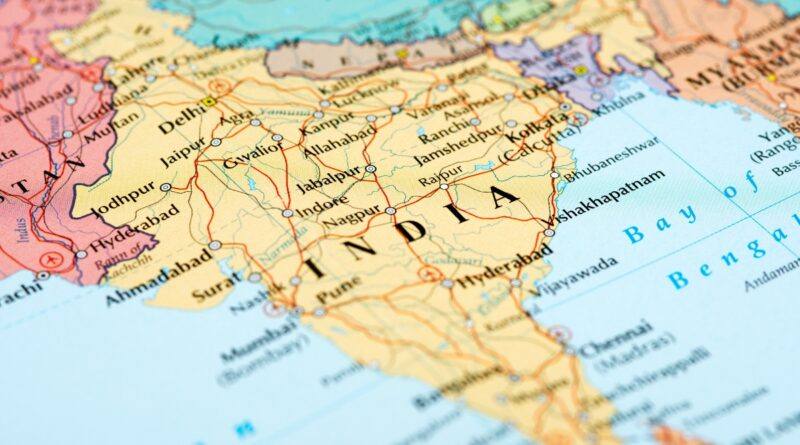Indians Expats: Its Better To Be Back In India
Why Indians Are Returning to Their Homeland for Better Opportunities and Quality of Life
A post by an Indian guy describing why people are returning to India has gone viral on the internet.
Why Indians Are Moving Back to India from Sweden.
— Ankur💻🎧💪 (@TheAnkurTyagi) August 21, 2024
After enjoying Sweden's beautiful landscapes, unique culture, and new experiences, many Indians are finding themselves drawn back to India.
As an Indian living in Sweden, here are my thoughts on why this trend is becoming more… https://t.co/1bHb8On05e
According to Statistics Sweden, for the first time in at least two decades, more Indians are leaving Sweden than entering. Historically, the number of Indian migrants to Sweden has continuously outnumbered those leaving, but this tendency has reversed in the first half of 2024.
Ankur Tyagi’s post on X clarified why this transition is occurring. Despite Sweden’s gorgeous scenery, distinct culture, and fresh experiences, many Indians prefer to return to India.
Tyagi cites various explanations for the reverse migration:
1. Improved Career Prospects in India
India’s developing economy provides highly trained workers with competitive pay and intriguing employment prospects. While Sweden offers an excellent quality of life, some Indians discover even greater financial opportunities in nations such as the United States, which offers higher income and lower taxes.
2. A feeling of isolation in a foreign land
Many Indians miss the strong social relationships and community life they experienced in India, which might be difficult to reproduce in Sweden. This sensation of solitude had a key role in the decision to return home.
3. Cultural familiarity.
Despite their education and professional experience, many spouses face language challenges and cultural differences when looking for work in Sweden. These obstacles might make integration into Swedish society difficult, prompting many people to feel better at ease returning to India.
4. Quality of Life
Family is a fundamental aspect of Indian culture. Many people return to India to care for ageing parents and spend more time with extended family. The capacity to maintain a good level of living in India while staying close to family increases overall satisfaction, particularly for children who benefit from bonding with their grandparents.
5. Living Expenses and Weather Conditions
The high expense of living in Sweden, especially in major cities, can be taxing. Many people discover that they can live a similar or better lifestyle in India for a lower cost. Furthermore, the long, dark winters and chilly climate of Sweden might be tough for individuals used to India’s pleasant weather, which contributes to the decision to return.
According to the data, between January and June of this year, 2,837 Indian-born people departed Sweden, a 171% rise over the same period previous year. This has resulted in Indians being the largest group of emigrated foreigners by a significant margin, ahead of those born in China, Iraq, and Syria.
According to Statistics Sweden, this is the first time in Sweden that there has been a negative net migration of Indians in the first six months of a year since 1998.
Similarly, an IITian couple travels back to India after residing in the United States and reveals ten contrasts between the countries.

Nayrhit, co-founder of Gushwork, and his wife Rishita Das chose to return to India last year after spending some time in the United States.
Nayrhit, co-founder of Gushwork, and his wife Rishita Das chose to return to India last year after spending some time in the United States. The pair travelled to the United States for higher education after graduating from the Indian Institute of Technology, Kharagpur in 2016. Nayrhit currently shares his time between India and the United States, where his company Gushwork is still headquartered, while Rishita is an Assistant Professor of Aerospace Engineering at IISc Bengaluru.
My wife and I made the decision of moving back to India from the US after completing our higher education.
— Nayrhit (@NayrhitB) August 20, 2024
We decided to dedicate our lives to building & researching technologies out of India for the world.
We recently completed 1 year of our stay here.
To all the Indian… https://t.co/zMKQ80VVmU pic.twitter.com/wFIermI1Ij
Both Nayrhit and Rishita graduated from IIT Kharagpur.(X/@NayrhitB)
After one year of living in India, they created a thread with ten major insights of the two countries. “To all the Indian 20-40 year olds who are contemplating their move back to India but are filled with uncertainties, this is an honest compilation of 10 differences we observed after our move back here!” Nayrhit posted on X yesterday.
Here is what the couple learnt after relocating back to India.

Domestic aid
For Nayrhit and Rishita, the first distinction between India and the United States is the convenience and cost of having domestic help in their own country. “While I do worry about the of the cost of labour being cheap, the convenience is undeniable – a 15-20 extra hours each week as working couple is a luxury tough to imagine back in the US,” writes the co-founder of Gushwork.
Traffic
Traffic in India is not inherently worse than in downtown New York or San Francisco, but it is more unexpected and annoying, according to the pair. They do not see a solution to this challenge in the near future.
Digital convenience.
India is significantly superior in terms of digital convenience, thanks to a slew of rapid commerce systems that can deliver everything from groceries to makeup in 10 minutes.
“Sure, the US has Instacart & DoorDash, but the intra-city logistics here are far superior & efficient,” Nayrhit remarked on Twitter.
Personal connections.
The pair sees a significant cultural divide between India and the United States. “Culturally, as an Indian, I found it challenging to make deep connections in the US—beyond coffee meetups, drinks, or the usual work/sports talk,” Nayrhit wrote in his post about X.
Digital payments
India’s much-touted digital payments infrastructure outperforms the United States hands down. “Apple Pay and UPI are comparable from user experience standpoint,” Nayrhit pointed out. However, the real distinction between the two platforms is that “UPI is free and a part of government infrastructure, whereas in Apple Pay, there is a 2%-7% of transaction volume which flows into private players.”
Orderly queues
The pair misses one thing about the United States: orderly queues. “In India, lines at counters, coffee shops, security checks and QSRs can be really chaotic, sometimes very irritating,” they told me.
Food
Both countries win when it comes to food. “Coming back to Dosas & Biryanis after PB&J & Burgers is a relief. “Though I do miss the variety of cheese, bread, and desserts,” Nayrhit added.
Outdoor activities.
For those who enjoy the outdoors, the United States enjoys a clear advantage over India. According to the IITian pair, “if you cannot live without hiking, biking, or visiting beaches, you will not be very happy” in India.
LGBTQ-friendly
India has a long way to go in terms of LGBTQ acceptance. “Yes, there are hyperurban areas where that is OK. However, mainstream India is still not very welcoming of LGBTQ populations,” Nayrhit said, adding that he hopes to see improvement within the next five years.
Job market
Finally, the pair stated that the work market is competitive in both nations, but for different reasons. You can acquire a work in India, but it is difficult to find a high-paying employment that allows you to have a house and automobile comparable to those in the United States.





What i do not understood is in truth how you are not actually a lot more smartlyliked than you may be now You are very intelligent You realize therefore significantly in the case of this topic produced me individually imagine it from numerous numerous angles Its like men and women dont seem to be fascinated until it is one thing to do with Woman gaga Your own stuffs nice All the time care for it up
Double Wall Corrugated (DWC) Pipes : With superior strength and flexibility, DWC pipes are ideal for underground installations. ElitePipe Factory in Iraq offers high-grade DWC pipes.
I am not sure where youre getting your info but good topic I needs to spend some time learning much more or understanding more Thanks for magnificent info I was looking for this information for my mission
Excellent blog here Also your website loads up very fast What web host are you using Can I get your affiliate link to your host I wish my web site loaded up as quickly as yours lol
Normally I do not read article on blogs however I would like to say that this writeup very forced me to try and do so Your writing style has been amazed me Thanks quite great post